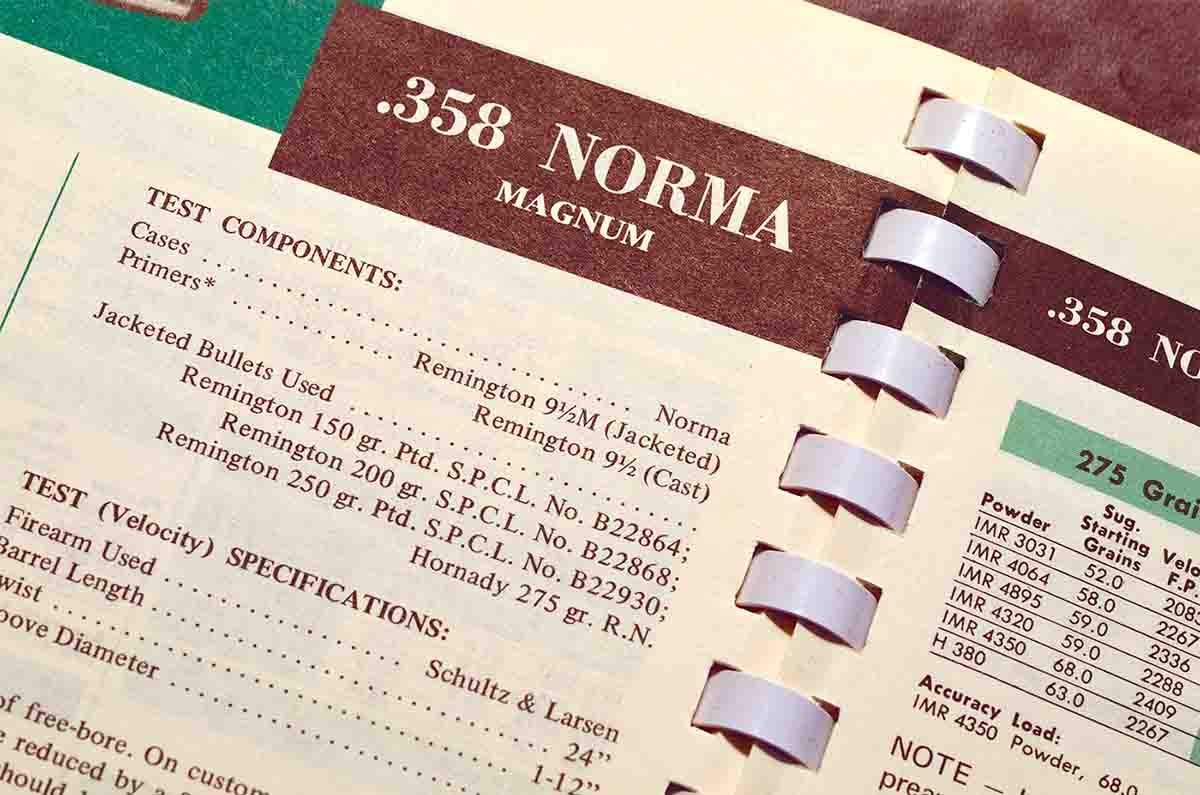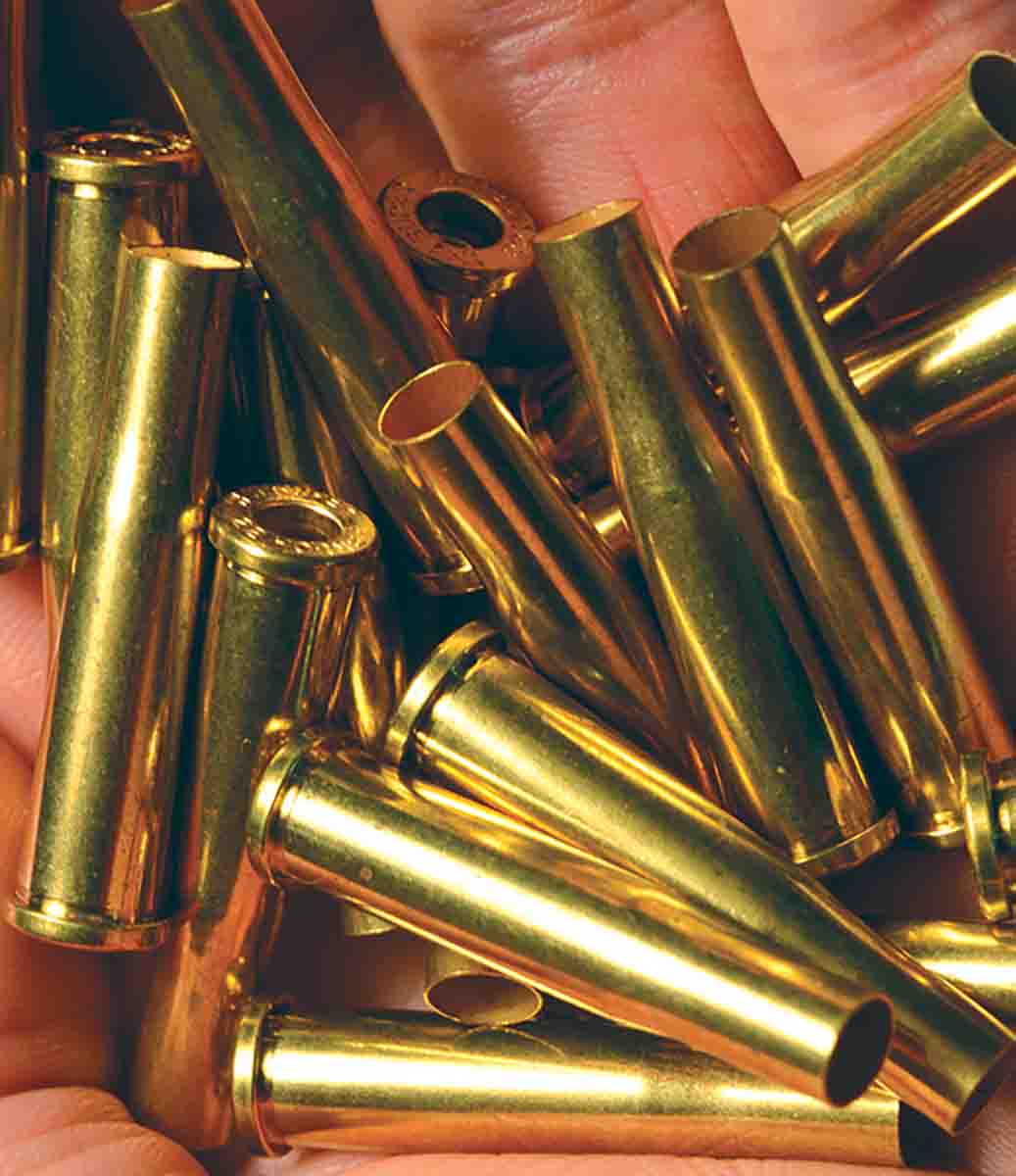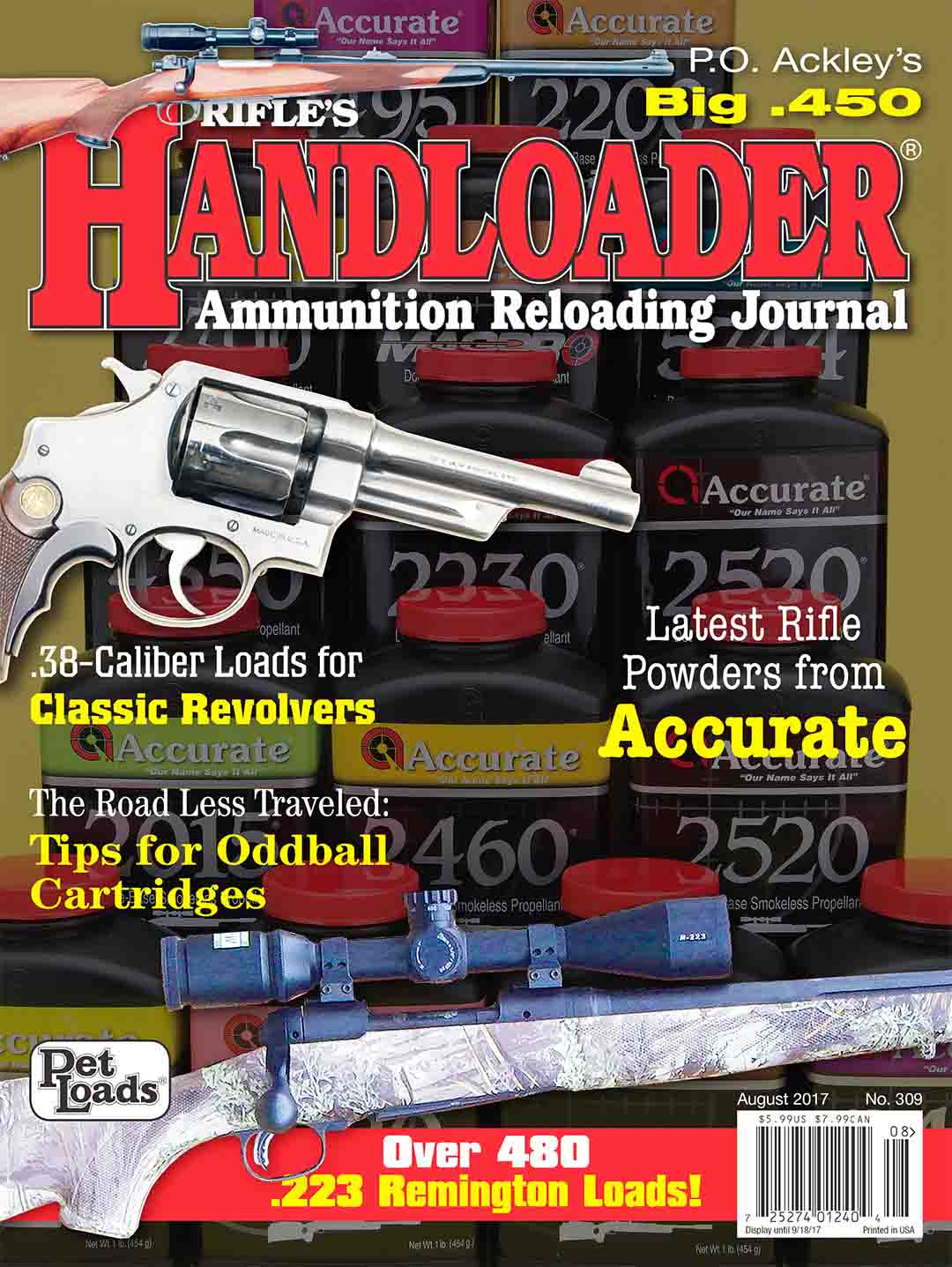In Range
Loads From The Intrepid Years
column By: Terry Wieland | August, 17

The most personal reason is that I can’t see any point in trying to make any cartridge into something it is not. This is a basic philosophical belief. There are two types of guys: Those who buy a small engine and then strain it trying to do the work of a larger one and those who buy a larger engine than they really need, then let it comfortably chug along, doing work it finds effortless. I am one of the latter.
The same is true of cartridges. There are shooters who buy a .308 Winchester and try to make it into a .30-06, complete with excessive pressures, riveting recoil and short barrel life, and those who do the reverse. Some handloaders seem to think the whole point of “loading your own” is to pack in as much powder as possible to “realize the potential” of a cartridge they believe the factories under-load, for whatever motives.
Another reason for listing loads that may or may not be lighter, but are unarguably safe, is the modern bugaboo of legal liability. Every load published in Handloader is accompanied by a disclaimer, of course, but legal liability and moral liability are two different things. No one wants to see anyone get into trouble because of something he wrote.
Those of us who have been around a while, and have a collection of old loading manuals, can go back and see how published loads – from the same company, for the same cartridge, using the same components – can vary over time. Over the past 40 years, loads have generally become lighter. What is “maximum” now was “midrange” back then, and what was maximum then is beyond the pale today. Part of this is due to more sophisticated testing techniques for evaluating loads. Part is probably due to warnings from corporate lawyers. Some of it, undoubtedly, is due to the simple fact that things change.
For example, it is most unwise to use loading data for the .22 Hornet from before 1950 without working up extremely carefully. This also applies to wildcats made on the Hornet case. Around 1950, Hornet brass was given thicker walls, reducing internal capacity and thereby increasing pressures. This was not widely advertised, even at the time. These increased pressures can be hazardous, as I found out when using what I thought was a modest pre-1950 formula with modern brass in a converted Martini. One round locked the action tight and blew out the conversion (installed by an unknown gunsmith many years ago) that had turned it from a rimfire into a centerfire. It required three trips to two different gunsmiths over a two-year period to return it to shootable condition.
Another example is the .270 Winchester. I have found more variation in case capacity with this cartridge, in newly manufactured

Dean Grennell, a vastly experienced and respected handloading writer, calls the early loading books from Lyman and Speer the “intrepid” manuals. Intrepid means courageous, going where others fear to tread. Sometimes, however, others fear to tread there for very good reason.
My favorite old manual is Lyman Reloading Handbook 45th Edition, published in 1970. It contains data for a number of cartridges not included in many new books. Still, you need to be careful. In 1970, IMR-4831 did not exist, there was only the Hodgdon original. So, where you see just “4831,” it means H-4831, not IMR. Lyman 45th Edition is a useful reference to check when a modern load seems too light or whether a heavier one using the same powder and bullet was considered safe in days past.
To return to the specific case that began all this, the .358 Norma Magnum is a factory cartridge with some pitfalls all its own. To the best of my knowledge, only two factory rifles were ever chambered in .358 Norma. These were the Schultz & Larsen and the Husqvarna; the Browning High Power from Belgium was listed as such, but whether any were actually produced is debatable. There were, however, an unknown (and unknowable) number of custom rifles, as well as rifles rechambered or rebarreled to the .358 Norma. Because specifications vary from gunsmith to gunsmith, some have no freebore, others have a lot; some have tighter chambers or snug bores. Any of these variables can cause problems with hot handloads.
No wonder modern manuals err on the light side with the .358 Norma. Who wouldn’t? Still, an experienced handloader can work up carefully, tailoring loads to a specific rifle. If wanting the absolute maximum in power, he can find the load that delivers it for him.
Lyman 45th Edition lists the heaviest .358 Norma Magnum load with a 250-grain bullet at 2,857 fps with 79.5 grains of IMR-4350; it’s a compressed load, using a magnum primer. The Speer Reloading Manual #14, from 2007, shows a maximum with a 250-grain bullet at 2,732 fps with 76 grains of IMR-4350. My load for the 250-grain bullet, published in the article, is for 77 grains of IMR-4350, delivering 2,765 fps.
I have gone higher than that but found that while recoil and muzzle blast increased, velocity did not – at least not enough to justify the negatives. My Schultz & Larsen is the same as Lyman used in 1970; Speer used a custom Winchester Model 70. Barrel length in both is 24 inches. As a random check, I looked at Swift’s maximum, using a 250-grain A-Frame. In the company’s second manual from 2014, using IMR-4350, the maximum is 71.5 grains for a velocity of 2,673 fps. Swift used a 24-inch Wiseman test barrel.
Since its introduction, the listed velocity of Norma factory ammunition has been 2,790 fps with a 250-grain bullet from a 23-inch barrel. In Norma’s latest manual from 2013, different sets of loads are listed for five different 250-grain bullets from five manufacturers. The highest velocity of any of the five is 2,845 fps with the Nosler Partition using 76 grains of Norma URP – a powder slower than IMR-4350. The other loads range from 2,600 fps on up, with most maximums being between 2,700 and 2,750 fps. The new Norma manual lists only one load aside from the 250-grain bullets, and that’s the 225-grain Swift A-Frame. The test barrel was 26 inches.
All of these mentioned are serious big-game loads, and this information tells us several things. First, published loads are, indeed, lighter today than they were 50 years ago. A second – and more important point – is that bullets may weigh the same but have significantly different pressure profiles. Once you start bumping that ceiling, it pays to be very cautious indeed.
What is missing from modern data is formulas for light loads or using lighter bullets. These are the loads that make the .358 Norma Magnum so adaptable to a wide range of uses, and these are the loads I wanted to provide in Handloader.


